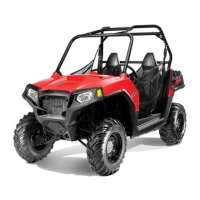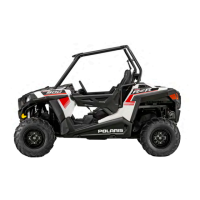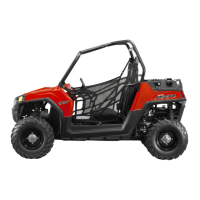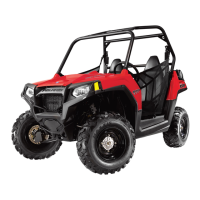1. Place machine on a smooth level surface and set steering wheel in a straight
ahead position. Secure the steering wheel in this position.
2.
NOTICE
It is important the height of both marks be equally positioned to get an accurate
measurement.
Place a chalk mark on the center line of the front tires approximately 10″
(25.4 cm) from the floor or as close to the hub/axle center line as possible
q
.
3. Measure the distance between the marks and record the measurement. Call
this measurement “2”.
4. Rotate the tires 180° by moving the vehicle forward. The chalk marks are
now facing rearward, even with the hub/axle center line.
5. Again measure the distance between the marks and record. Call this
measurement “3”. Subtract measurement “3” from measurement “2”. The
difference between measurements “2” and “3” is the vehicle toe alignment.
The recommended vehicle toe tolerance is 0 to 1/8” (0 to 3.2 mm) toe out.
This means the measurement at the front of the tire
w
is 0 to 1/8” (0 to 3.2
mm) wider than the measurement at the rear
e
.
MEASUREMENT
Wheel Toe-Out:
0 to 1/8" (0 to 3.2 mm)
If toe alignment is incorrect, repeat steps 3-5 of “Wheel Toe Alignment
Inspection”, but instead measure the distance between each wheel and the
vehicle center. This will tell you which tie rod needs adjusting.
NOTICE
Be sure steering wheel is straight ahead before determining which tie rod
needs adjustment.
CAUTION
During tie rod adjustment, it is very important that the following precautions be
taken when tightening tie rod end jam nuts.
If the rod end is positioned incorrectly it will not pivot, and may break.
111
MAINTENANCE

